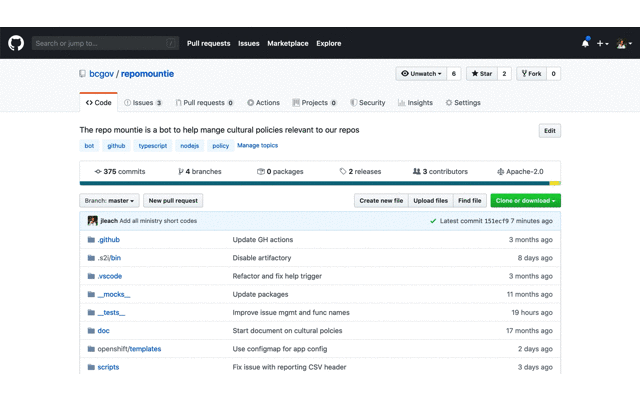Check out the manifests in openshift/. There you'll find one to deploy the Hipster Store demo application and the associated Network Security Policy (NSP) to make it work.
This project was created to show off some best practices for labeling your application, components, routes, and network security policy. Labeling is is key to both a healthy easy to manage application as well as implementing meaningful custom NSP.
The Hipster Store (HS) is a sample project created by Google to illustrate a microservices architecture designed to run on Kubernetes (k8s). The HS makes for a great teaching application for Aporeto for a few reasons: its has lots of components with specific communication paths; its a working application; and its well documented.
As part of this demo project the HS application was converted to work on OCP and custom NSP was created to only allow components talk to the other components required to preform their job according to the Service Architecture.
Labels serve many purposes in the OpenShift Container Platform (OCP). Applying labels to pods or routes behavior can be assign or changed. In our case, labels are used to create an identity for the HS application, as a whole, as well as its constituent component.
Build the identity of our application and components by applying labels at different levels:
The first label is attributed to the Deployment section of each component in our app.yaml manifest. By inserting the label app: hipster-store at this level we group all the components into a single application visible in the OCP Web console.
- apiVersion: apps/v1
kind: Deployment
metadata:
name: emailservice
labels:
app: hipster-store
spec:This results in all of the components grouped within OCP as seen by the following web console screen-shot:
The second label is attributed to the template section of the manifest. This unique label is applied to the running Pod and it the secret sauce in our identity.
template:
metadata:
labels:
app: hipster-store
role: emailserviceThis results in unique identifying a component by its role within OCP as seen by the following web console screen-shot.
ProTip 🤓
Pods are also called Processing Units (PU) in Aporeto parlance; notice how the PU inheres the app: hipster-store label from its deployment config. You can use this in NSP to reference all components.
TBD. This section will run people through a lab based on a bootstrap deployment.
This sections is meant for to deploy-and-go. You won't learn much doing this other that have a working sample application you can review. The following steps (commands) will deploy the following components:
- Hipster Store Application
- Custom Policy
- Load Generate
Before you deploy this application you should remove any existing policy created automatically or otherwise. To check if you have any existing policy run the following command:
oc get nspOn OCP4 there are no default policies, however, on OCP 3.11 you may see these three policies. If you do, they need to be deleted:
NAME AGE
egress-internet 6m
int-cluster-k8s-api-comms 6m
intra-namespace-comms 6mDelete them with the following command:
oc delete nsp egress-internet int-cluster-k8s-api-comms intra-namespace-commsIn order for PUs to deploy they need to be able to communicate with the k8s API. We'll go ahead and deploy our NSP first because it contains the policy to allow this to happen. We could deploy the applications first but we'll see lots of CrashLoopBackOff messages as PU's health checks and k8s API communications fail.
oc process -f openshift/app-netpol.yaml \
-p NAMESPACE=$(oc project --short=true) \
| oc apply -f -As mentioned above this allows PUs to communicate acording to the Service Architecture.
ProTip 🤓
The NAMESPACE parameter is required because your policy will be applied to an Aporeto namespace that matches your OCP namespace. It will signal to Aporeto the scope of your policy.
Now deploy the application and components. This will spin up several pods and create a route you can use to test the application.
oc process -f openshift/app.yaml| oc apply -f -Wait for all the pods to start; they will have a "READY" count of 1/1 as shown by the command oc get pods. Once all pods have 1/1 in the READY state you can test the application by loading the route in your browser.
The HS comes with a sample load generator. This is great for debugging NSP because it will generate traffic across all the components. The loadgen.yaml manifest contains its own NSP which is why the NAMESPACE parameter is required.
oc process -f openshift/loadgen.yaml \
-p NAMESPACE=$(oc project --short=true) | \
oc apply -f -You can now access your namespace via the Aporeto console and see the communication paths of the components. Green arrows mean all is well; orange mean something was not working but is now fixed; red indicates communication is failing. The direction of the arrow shows source to destination.
Use the label app=hipster-store to cleanup all deployments, pods, routes and NSP associated with the HS in one easy step:
oc delete all,nsp -l "app=hipster-store"This project is released with a Contributor Code of Conduct. By participating in this project you agree to abide by its terms.
Find the original Hipster Store here on GitHub.
The Hipster Store Service Architecture, which defines the communication patterns of the application, can be found here.
Much of the application deployment manifests are taken directly from the k8s manifests supplied by Google. That source is Copyright 2018 Google LLC.





